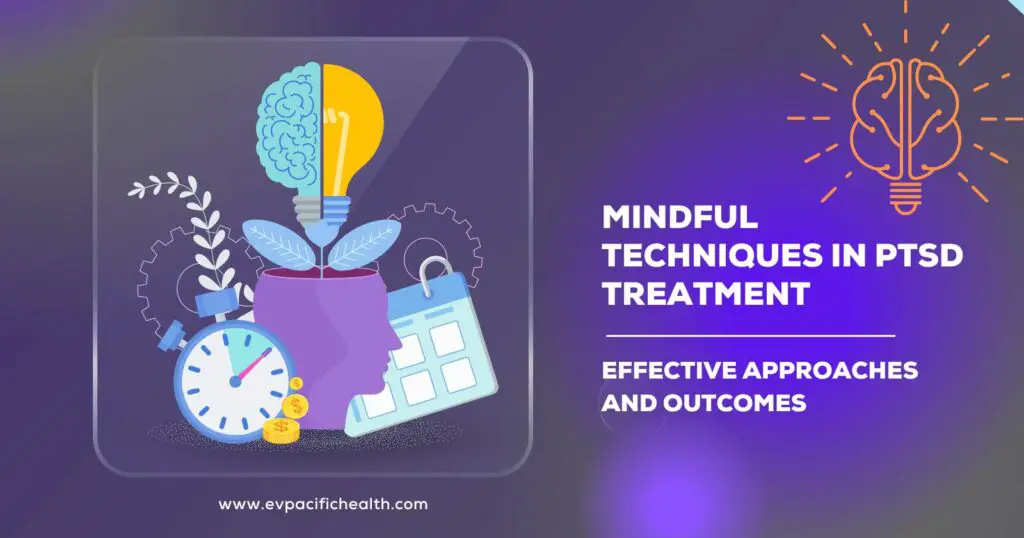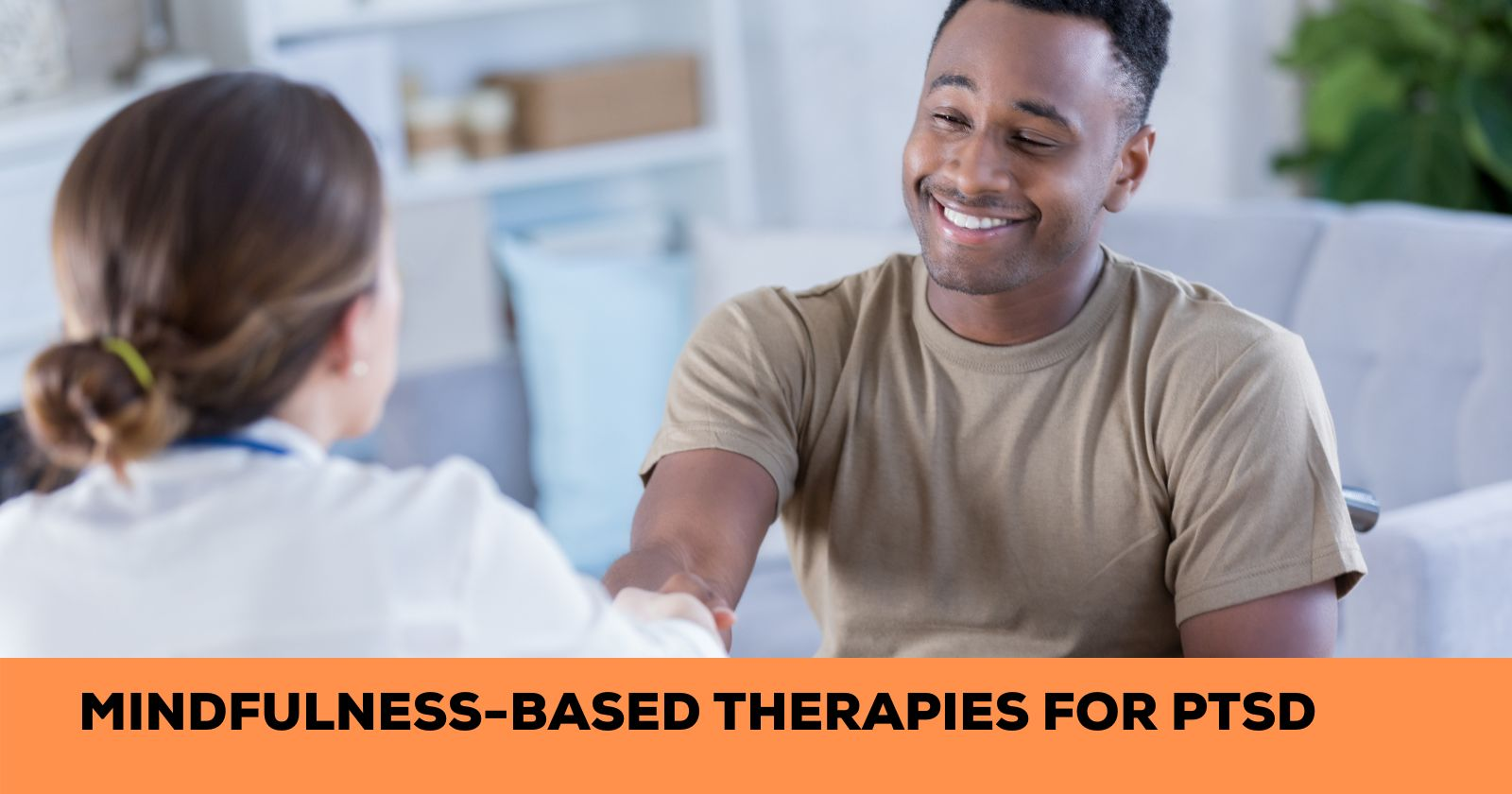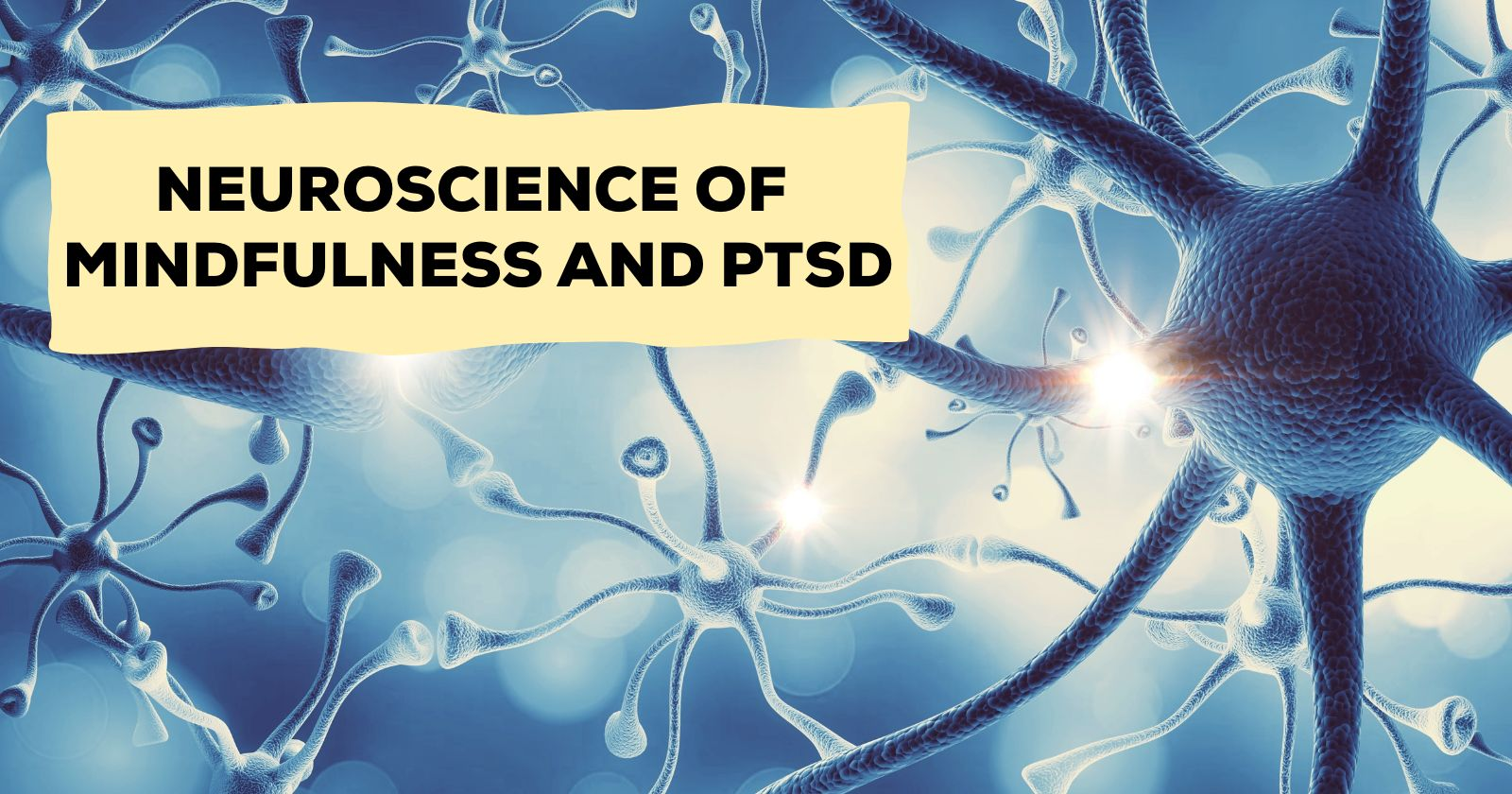Post-traumatic stress disorder (PTSD) is a mental health condition that can develop in individuals who have experienced or witnessed a traumatic event. Such scary events could include natural disasters, acts of violence, sexual assault, accidents, or combat. PTSD treatment involves helping individuals process their trauma and develop coping strategies for the symptoms, which may include intrusive thoughts, emotional disturbances, and hyperarousal. One technique showing promise in the treatment of PTSD is the use of mindfulness practices.

Mindfulness refers to the practice of deliberately paying attention to the present moment without judgment, allowing thoughts and emotions to pass through without actively engaging with them. In the context of PTSD treatment, mindfulness has been shown to help individuals become aware of their thoughts and feelings and manage them more effectively. This non-judgmental awareness can be particularly helpful in reducing the intensity and frequency of traumatic stress symptoms, as well as improving overall mental imagery health and well-being.
Practicing mindfulness in PTSD treatment may involve a variety of techniques, such as focused breathing exercises, body scans, and mindful meditation. These practices aim to cultivate a sense of calm and acceptance, allowing individuals to better cope with the emotional and mental challenges that come with post-traumatic stress inoculation training. Additionally, integrating mindfulness into the therapeutic process can complement other treatment approaches, such as cognitive-behavioral therapy or trauma-informed therapy, leading to more comprehensive healing and recovery for those struggling with PTSD.
Understanding PTSD

Post-traumatic stress disorder (PTSD) is a mental health condition that can develop in individuals who have experienced or witnessed a traumatic event. Trauma survivors often struggle with symptoms such as anxiety, depression, and rumination on traumatic experiences, which can interfere with daily life. In this section, we’ll explore the symptoms and diagnostic criteria of PTSD.
Symptoms
PTSD symptoms can be categorized into the following groups:
- Intrusive memories: Recurrent, distressing memories of the traumatic event, flashbacks, and nightmares.
- Avoidance: Avoiding thoughts, feelings, people, or places that remind the individual of the traumatic event.
- Negative thoughts and mood: Rumination, feelings of guilt, shame, detachment, or difficulty remembering certain aspects of the event.
- Heightened arousal and reactivity: Increased irritability, angry outbursts, difficulty sleeping, hypervigilance, and an exaggerated startle response.
The severity and duration of these symptoms vary among trauma survivors. Sometimes, symptoms can emerge months or even years after the traumatic event.
Diagnostic Criteria of PTSD Treatment
To diagnose PTSD, mental health professionals use the criteria provided by the DSM-5, which include:
- Exposure to a traumatic event, either by experiencing it directly, witnessing it, or learning about it happening to a close family member or friend.
- Presence of the following symptoms for at least one month:
- One or more intrusive memories
- One or more avoidance symptoms
- Two or more negative thoughts and mood symptoms
- Two or more heightened arousal and reactivity symptoms
3. Symptoms cause significant distress or impairment in social, occupational, or other important areas of functioning.
4. The use of medication, substance abuse, or other medical conditions does not cause the symptoms.
It’s essential for trauma survivors to seek professional help in order to address their symptoms and be properly diagnosed. Mindful techniques, along with other evidence-based PTSD treatments, can be effective in helping individuals manage their symptoms and improve their quality of life.
Mindfulness-Based Therapies for PTSD

Mindfulness-Based Stress Reduction (MBSR)
Mindfulness-Based Stress Reduction (MBSR) is a therapeutic approach that teaches individuals to become more aware of their thoughts, feelings, and bodily sensations in the present moment. By focusing on their breath and practicing non-judgmental awareness, individuals with PTSD can learn to manage stress more effectively and reduce symptoms of anxiety and depression. MBSR typically involves meditation as a cornerstone technique, along with guided imagery and body scanning exercises.
Mindfulness-Based Cognitive Therapy (MBCT)
Mindfulness-Based Cognitive Therapy (MBCT) is group therapy that combines elements of cognitive therapy with mindfulness practices, including meditation. This approach teaches individuals to recognize negative thought patterns that may contribute to PTSD symptoms and replace those patterns with healthier, more adaptive ways of thinking. MBCT also emphasizes acceptance and self-compassion, encouraging individuals to approach their triggers with an open and non-judgmental attitude.
Dialectical Behavior Therapy (DBT)
Dialectical Behavior Therapy (DBT) is a form of cognitive behavioral therapy that incorporates mindfulness practices. It is designed to help individuals develop emotional regulation skills, distress tolerance, interpersonal effectiveness, and mindfulness. DBT has been used to treat PTSD alongside other mental health conditions, such as borderline personality disorder and eating disorders. By focusing on skills training, individuals can learn to navigate difficult emotions and situations related to trauma more effectively.
Cognitive Processing Therapy (CPT)
Cognitive Processing Therapy (CPT) is another evidence-based intervention specifically designed to treat PTSD. While not exclusively a mindfulness approach, it does incorporate elements of mindfulness as part of a comprehensive treatment plan. CPT helps individuals understand and change dysfunctional thought patterns related to their trauma, promoting a more balanced and adaptive perspective. This includes recognizing problematic thought patterns, practicing self-compassion, and developing healthier cognitive and emotional responses to traumatic events and trauma-related memories.
In conclusion, incorporating mindfulness techniques in the treatment of PTSD can have a positive impact on individuals’ emotional well-being. By focusing on present-moment awareness, acceptance, and self-compassion, these interventions facilitate healing and promote a more adaptive way of coping with traumatic stress.
Applying Mindfulness Techniques For PTSD Treatment

Breathing Exercises
One of the foundational elements of mindfulness practice is focusing on your breath. Breathing exercises can help bring your focus to the present moment, alleviate anxiety, and reduce distress. To practice mindful breathing, follow these steps:
- Find a comfortable position and close your eyes.
- Take slow, deep breaths, inhaling through your nose and exhaling through your mouth.
- Focus on the sensation of your breath as it enters and exits your body.
- If you become distracted, gently bring your awareness back to your breath.
Grounding Techniques
Grounding techniques can help you manage arousal and maintain awareness during mindfulness practice. They can be particularly helpful for individuals with PTSD who may experience flashbacks, intrusive thoughts, or heightened anxiety. Some grounding techniques to try include:
- Five Senses: Focus on each of your five senses in turn, noticing what you can see, hear, smell, taste, and touch in your surroundings.
- Body Scan: Start at the top of your head and slowly move your attention through each part of your body, noticing any sensations or areas of tension.
- Object Anchors: Hold onto a small, familiar object like a stone or a keychain and focus on the texture, weight, and sensation of the object in your hand.
Meditation Practices
Meditation practices can help reduce anxiety and promote recovery in adults with PTSD. There are various meditation techniques to choose from, including:
- Guided Imagery: Visualize a peaceful, safe place or scenario that brings you comfort and focuses on the details of the scene.
- Loving-kindness meditation: Think about someone you care about and silently send them well wishes. Gradually expand these wishes to yourself, acquaintances, and even people you may not like.
- Body Scan meditation: Similar to the grounding body scan, start at the top of your head and slowly move your attention through your body. This time, try to release any tension or stress with each exhalation.
By incorporating these mindfulness techniques into your daily routine, you may find relief from PTSD symptoms and support your overall mental health professional and emotional well-being.
Neuroscience of Mindfulness and PTSD Treatment

Brain Regions Involved
Several brain regions are involved in PTSD and mindfulness practices. The primary areas associated with this include the amygdala, responsible for emotion and fear processing; the hippocampus, a crucial region for memory formation and regulation; and the limbic system, which plays a significant role in emotional regulation and stress responses. Research using functional magnetic resonance imaging (fMRI) has shown that mindfulness practices can impact these brain regions and contribute to reducing PTSD symptoms.
For instance, studies have found that PTSD patients exhibit heightened amygdala activation when exposed to prolonged exposure to trauma-related stimuli, while mindfulness practices have been shown to reduce this activation, ultimately contributing to improved emotional regulation. Additionally, the hippocampus has been shown to undergo structural changes following mindfulness interventions, resulting in increased gray matter density and improved memory consolidation processes.
Effects on Stress Hormones
Mindfulness practices also have an impact on stress hormone regulation, particularly cortisol, one of the primary stress hormones. People with PTSD tend to have elevated cortisol levels, which can exacerbate symptoms and make recovery more challenging. Mindfulness techniques such as meditation and body scans have been shown to reduce cortisol levels, ultimately contributing to better stress management and regulation in PTSD patients.
To provide a better understanding of the relationship between mindfulness and stress hormones, the following are some relevant findings:
- Mindfulness-based interventions have been found to reduce cortisol levels in various populations, including people with PTSD.
- Reduction in cortisol levels can lead to better stress management and a lower likelihood of experiencing PTSD symptoms.
- The positive effects of mindfulness on cortisol levels can contribute to overall improvements in mental health, including reduced anxiety and increased resilience.
In conclusion, mindfulness practices can have a profound impact on the brain regions and stress hormone regulation in PTSD patients. Further research and exploration of these techniques in PTSD treatment can help us better understand the potential benefits of mindfulness in managing and alleviating symptoms.
Support and PTSD Treatment Resources

National Center for PTSD
The National Center for PTSD is a valuable resource for individuals suffering from post-traumatic stress disorder (PTSD) and their loved ones. The center provides comprehensive information on various treatment options, including psychotherapy, exposure therapy, and mindfulness-based techniques. Veterans can access support services, education on PTSD, and resources for finding qualified therapists to help them improve their functioning and overcome avoidance behaviors.
Mindfulness Coach Applications
The use of mindfulness techniques can be highly beneficial for people with PTSD. One way to incorporate mindfulness into daily life is through the use of mindfulness coach applications. These apps provide guided meditation exercises, education on mindfulness principles, and tools to track progress. By focusing on the present moment and allowing thoughts and feelings to be experienced without judgment, mindfulness can help reduce the symptoms of PTSD and improve overall well-being.
PTSD Coach Applications
In addition to mindfulness-based interventions, PTSD coach applications are another valuable resource for individuals with post-traumatic stress disorder. These apps offer tools and resources to help manage PTSD symptoms, including information on various treatment options, tips for coping with stress, and access to support networks.
Key Features Example Applications Education on PTSD PTSD Coach, Self-Help for Trauma Symptom Management MoodTools, PTSD Toolkit Community Support Talkspace, 7 Cups of Tea
These applications can help individuals connect with therapists, access educational resources on PTSD, and develop strategies for managing symptoms of mental illness, ultimately working towards improving their quality of life.
Complementary Treatments and Strategies

Eye Movement Desensitization and Reprocessing (EMDR)
EMDR is a well-established individual therapy for PTSD. This technique uses eye movements to help process and reprocess traumatic memories [1]. The goal is to reduce the emotional response to traumatic memories and allow individuals to develop adaptive coping strategies. EMDR has been shown to be effective in reducing symptoms of PTSD and is often considered a complement to therapies like Cognitive Behavioral Therapy (CBT).
Medications
Several medications can be used in conjunction with therapy to alleviate PTSD symptoms. Some commonly prescribed medications include:
- Selective Serotonin Reuptake Inhibitors (SSRIs): These antidepressants help regulate mood and reduce anxiety by increasing the level of serotonin in the brain.
- Benzodiazepines: These medications can help manage severe anxiety and insomnia but should be used with caution due to the potential for substance use and dependence.
It is essential for individuals with PTSD to work closely with their mental health professionals to find the most appropriate medication and dosage for their needs.
Trauma-Informed Approaches
Trauma-informed approaches recognize the importance of understanding the impact of trauma on an individual’s mental health and overall well-being. Mental health professionals implementing these approaches prioritize creating a safe and supportive environment for clients with PTSD. Trauma-informed approaches can include:
- Self-compassion: Encouraging individuals to treat themselves with kindness and understanding during the healing process.
- Body-oriented therapies: Techniques such as yoga or deep breathing exercises that help individuals connect with their bodies and regulate their nervous system.
Incorporating trauma-informed approaches into treatment not only improves the therapeutic relationship between clinicians and clients but also enhances the mental health benefits of other interventions like CBT and EMDR.
By using a combination of complementary treatments and strategies, individuals with PTSD can find the most effective and personalized approach to healing and recovery.
Challenges and Considerations

Potential Pitfalls
When implementing mindful techniques in PTSD treatment, it is essential to be aware of potential pitfalls. One challenge is that mindfulness practices can generate increased awareness of physical sensations and emotions, which may lead to feelings of overwhelm or trigger trauma reactions in individuals with PTSD. In some cases, this heightened awareness can lead to dissociation or exacerbate emotional distress.
To minimize these risks, therapists may introduce grounding or anchoring techniques to help clients maintain self-regulation throughout mindfulness exercises. These techniques can provide a sense of stability and safety, preventing clients from becoming overwhelmed or detached from their experiences during the practice.
Addressing Comorbid Conditions
PTSD often co-occurs with other mental health conditions, such as depression or anxiety disorders. Integrating mindfulness-based approaches, like mindfulness-based stress reduction (MBSR) and mindfulness-based cognitive therapy (MBCT), into treatment plans can help address a range of mental health concerns, including depressive symptoms, trauma memory, and cognitive processing difficulties.
However, it is important to recognize that mindfulness practices alone may not be sufficient to address complex comorbid conditions. In such cases, therapists may want to consider incorporating evidence-based therapies like cognitive processing therapy (CPT) or dialectical behavior therapy (DBT) for a more comprehensive approach.
Finding the Right Therapist
A critical aspect of successful PTSD treatment is finding a therapist who is experienced in applying mindfulness techniques and working with trauma-related disorders. A well-matched therapist-client relationship fosters trust, understanding, and rapport, making the therapy process more effective. It is beneficial to find a therapist experienced in addressing trauma reactions with appropriate sensitivity and understanding of the client’s unique needs and preferences.
In addition to professional qualifications, clients may benefit from using resources like PTSD Coach or online support communities to connect with others who have successfully navigated their PTSD treatment journey. They can provide valuable insights and recommendations on finding the most suitable therapist.

